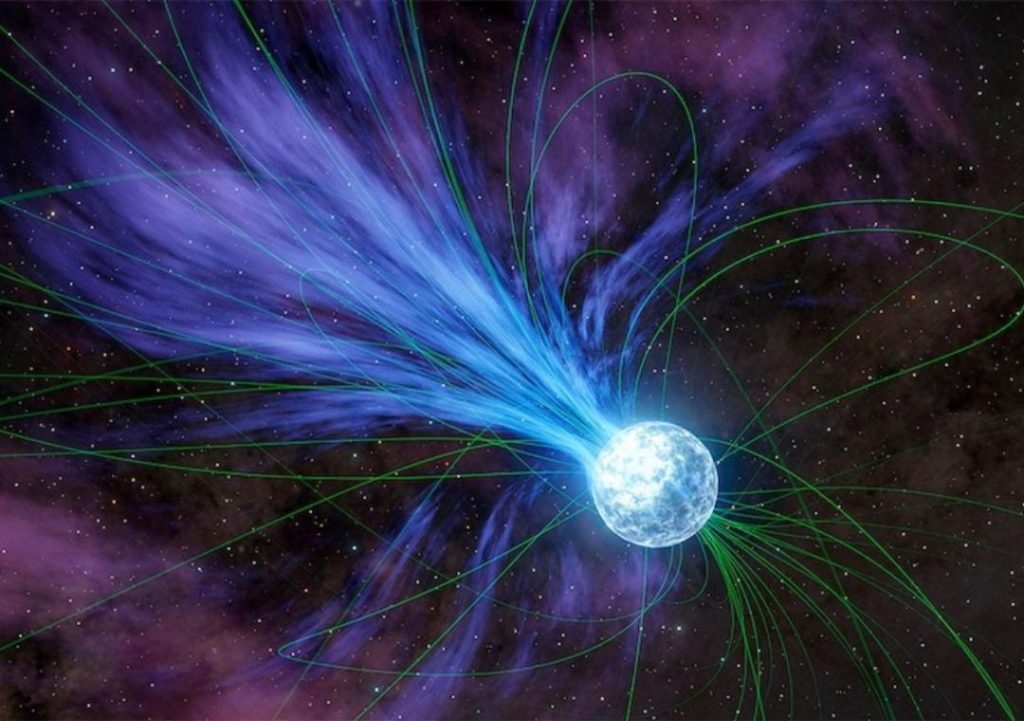
Gold & Platinum Created through Neutron Stars’ Explosions: Study
For centuries, humans have been fascinated by the origin of precious metals like gold and platinum. While we’ve long known that these metals are naturally occurring, their exact formation process has remained a mystery. However, a recent study has shed new light on the cosmic events that led to their creation. According to a study led by Columbia University student Anirudh Patel, magnetars or highly magnetized neutron stars played a crucial role in the formation of these precious metals.
Magnetars are incredibly powerful stars that are capable of releasing massive flares of energy when they explode. These explosions, known as supernovae, are so powerful that they can be seen from millions of light-years away. In the past, scientists have speculated that these events could have played a role in the creation of heavy elements like gold and platinum. However, it wasn’t until now that we have direct evidence of their involvement.
The study, published in the journal Nature Astronomy, analyzed data from a supernova that occurred over 20 years ago. By studying the light emitted by the explosion, the researchers were able to identify the presence of gold and platinum in the debris. This discovery has significant implications for our understanding of the origins of these precious metals.
But how exactly did magnetars create gold and platinum? The process is complex, but it begins with the intense heat and pressure generated by the magnetar’s explosion. As the star collapses, its core becomes incredibly hot, reaching temperatures of millions of degrees. At these temperatures, atomic nuclei begin to fuse together, forming heavier elements like gold and platinum.
The presence of these elements in the debris emitted by the supernova was confirmed through a process called spectroscopy. By analyzing the light emitted by the explosion, the researchers were able to identify the characteristic signature of gold and platinum. This signature is unique to these elements and can be detected by scientists using powerful telescopes.
But why are magnetars so important in the formation of gold and platinum? The answer lies in their unique properties. Magnetars are incredibly dense, with masses that are several times greater than that of the sun. This density creates an incredibly strong magnetic field, which is capable of compressing and heating the star’s core. This compression and heating is necessary for the creation of heavy elements like gold and platinum.
The study’s findings have significant implications for our understanding of the origins of gold and platinum. While we’ve long known that these metals are naturally occurring, their exact formation process has remained a mystery. The discovery of magnetars’ role in their creation provides a new window into the cosmic events that shaped our universe.
But what does this mean for the average person? For one, it highlights the incredible complexity and beauty of the universe. The fact that gold and platinum were created in the heart of a magnetar’s explosion is a testament to the incredible power and energy that lies at the heart of our cosmos.
It also raises questions about the potential for other elements to be created through similar cosmic events. The universe is full of mysteries, and the discovery of magnetars’ role in the creation of gold and platinum is just the latest example of our growing understanding of its workings.
In conclusion, the study’s findings provide a fascinating glimpse into the cosmic events that shaped our universe. The creation of gold and platinum through neutron stars’ explosions is a testament to the incredible power and complexity of the universe. As scientists continue to study these events, we can expect to learn even more about the origins of the elements that make up our world.






